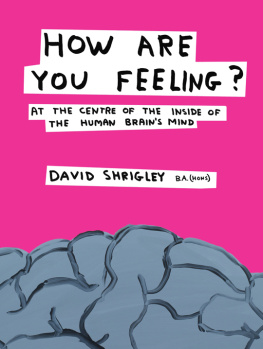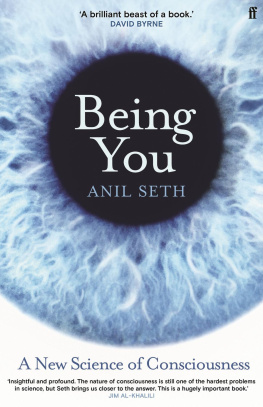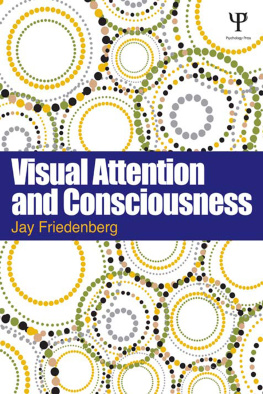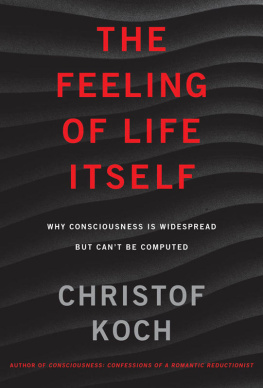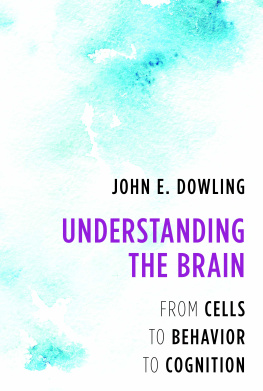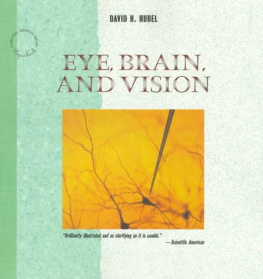Why Red Doesnt Sound Like a Bell
Understanding the feel of consciousness
J. Kevin O'Regan

- Oxford University Press, Inc., publishes works that further Oxford Universitys objective of excellence
- in research, scholarship, and education.
- OxfordNew York
- AucklandCape TownDar es SalaamHong KongKarachiKuala LumpurMadridMelbourne
- Mexico CityNairobiNew DelhiShanghaiTaipeiToronto
- With offices in
- ArgentinaAustriaBrazilChileCzech RepublicFranceGreeceGuatemalaHungaryItaly
- JapanPolandPortugalSingaporeSouth KoreaSwitzerlandThailandTurkeyUkraine
- Vietnam
- Copyright 2011 by Oxford University Press, Inc.
- Published by Oxford University Press, Inc.
- 198 Madison Avenue, New York, New York 10016
- Oxford is a registered trademark of Oxford University Press
- Oxford University Press is a registered trademark of Oxford University Press, Inc.
- All rights reserved. No part of this publication may be reproduced, stored in a retrieval system, or
- transmitted, in any form or by any means, electronic, mechanical, photocopying, recording, or otherwise,
- without the prior permission of Oxford University Press, Inc.
- ______________________________________________
- Library of Congress Cataloging-in-Publication Data
- ORegan, J. K.
- Why red doesnt sound like a bell: understanding the feel of consciousness / J. Kevin ORegan.
- p.; cm.
- Includes bibliographical references and index.
- ISBN 978-0-19-977522-4
- 1. ConsciousnessPhysiological aspects. 2. Visual perception. I. Title.
- [DNLM: 1. Consciousnessphysiology. 2. Psychomotor Performance. 3. Vision, Ocular. 4. Visual Perception. WL 705]
- QP411.O74 2011
- 612.82--dc22 2010042381
- ______________________________________________
- 123456789
- Printed in the United States of America on acid-free paper
Dedication
(p.v) to my parents, (and to Lazula) (p.vi)
(p.vii) Preface
It was spring, and I was a PhD student, sitting with my supervisor in a caf in Paris, idly watching the tourists walking by. As I watched the tourists, I realized that the scene in front of me looked quite stable despite the fact that the image inside my eyes was shifting as I moved them back and forth. Why did the scene seem steady even when I moved my eyes?
My supervisor was an extremely good supervisor. Inclining his head to see some particularly attractive tourists, he mumbled distractedly: Yes, why dont you try and figure it out.
It took me 30 years, but I think Ive now figured it out. And doing so has led me by an indirect route to a better understanding of consciousness.
The journey began with vision. The problem I discussed with my supervisor is just one of many puzzles posed by vision. Engineers know well that the eye seems to be a catastrophic piece of apparatus, and its shortcomings lead them to raise questions like: Why do we see things right side up? Why dont we see that we have a blind spot in each eye? Why do we see things in focus, in color, undistorted, and generally veridical, despite the multiple defects of our eyes?
While investigating these puzzles, I came to realize that I had been thinking the wrong way about vision. I had fallen into a trap that has snared scientists since ancient times: mistakenly believing that vision is generated in the brain. Given the eyes defects, it is often difficult to avoid this trap, and in the first chapter of the book, Ill illustrate exactly how easy it is to fall into it. In the next four chapters, Ill show how to get out of the trap by adopting a sensorimotor approach to vision. This approach solves the puzzles about the eyes defects and predicts some interesting new phenomena, including looked but failed to see and change blindness. Both of these phenomena have received considerable attention recently, partly because of their importance in traffic safety and surveillance.
In the second half of the book, I show how the sensorimotor approach to vision can be extended to a new way of thinking about consciousness. I begin by reviewing the generally accepted notion of consciousness, and I show that there is an aspect of (p.viii) consciousness that, though very difficult, can be understood through scientific investigation. This aspect involves different levels of knowledge that a person has about what he or she is doing or thinking. It includes awareness and self-awareness, and it is related to attention. It is this first aspect of consciousness that engineers are already starting to build into robots.
There is, however, a second aspect of consciousness, namely its raw feel: what its like to experience the smell of a rose, the redness of red, the feeling of pain. Such inherently private experiences seem to elude scientific investigation. These raw feels are part of what philosophers call the hard problem of consciousness.
I explain how we can begin to understand raw feel by taking the same sensorimotor approach I take toward vision in the first part of this book. As I go on to illustrate, the sensorimotor approach to raw feel allows us not only to develop a general classification and understanding of the peculiarities of sensory feel but also to make surprising predictions about color perception, the localization of touch, and what is known as sensory substitution, in which, for example, it becomes possible to see via the skin or the ears.
Given how much progress the sensorimotor approach allows us to make in understanding raw feel, perhaps we are on our way to solving the hard problem of consciousness.
Note: For interesting supplements to the book, see the Web site http://whyred.kevin-oregan.net.
Notes:
() My supervisor was John Morton, a well-known experimental psychologist then at the Medical Research Council Applied Psychology Unit in Cambridge, UK. He was my official supervisor at Cambridge while I finished my PhD in Paris in Jacques Mehlers laboratory. I will remain eternally grateful to John Morton for helping me understand how to understand.
() The idea that from the engineers point of view the eye would seem to be an atrocious piece of apparatus had been mentioned by Hermann von Helmholtz in his Physiological Optics, which though written at the end of the 19th century is full of inspirations for us today (Helmholtz, 1867).
(p.ix) Acknowledgments
Writing this book has been an arduous process taking more than 15 years, with many people who have kindly contributed time and encouragement to me. Benedicte de Boysson Bardies was the person who suggested I embark on the venture, and I thank her warmly, as I thank Abel Gerschenfeld and Marco Vigevani, who provided further encouragement. My parents, brother, son Elias, and daughter Lori, as well as Hasna Ben Salah have given me extraordinary support, as have, in different ways and at different times, Alva No, Ed Cooke, David Philipona, Erik Myin, and Jacqueline Fagard. The following people read parts or all of the manuscript and provided valuable suggestions: Malika Auvray, Aline Bompas, Jim Clark, Jan Degenaar, Thi Bich Doan, Jrme Dokic, Shaun Gallagher, Abel Gerschenfeld, Andrei Gorea, Sylvain Hanneton, Tomas Knapen, Ken Knoblauch, Sid Kouider, Charles Lenay, Tatjana Nazir, Peter Meijer, Pasha Parpia, Frdric Pascal, Daniel Pressnitzer, Jolle Proust, Paul Reeve, Ronan Reilly, Martin Rolfs, Eliana Sampaio, and Aaron Sloman. I warmly thank them. I also warmly thank Marion Osmun and Catharine Carlin for their expert editorial work at OUP. (p.x)


